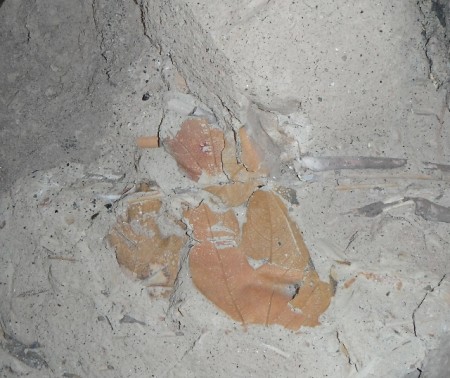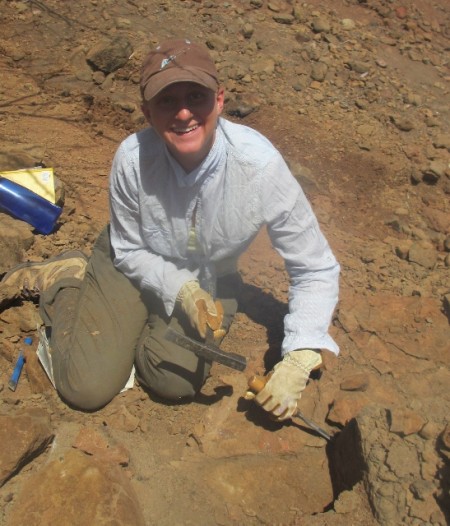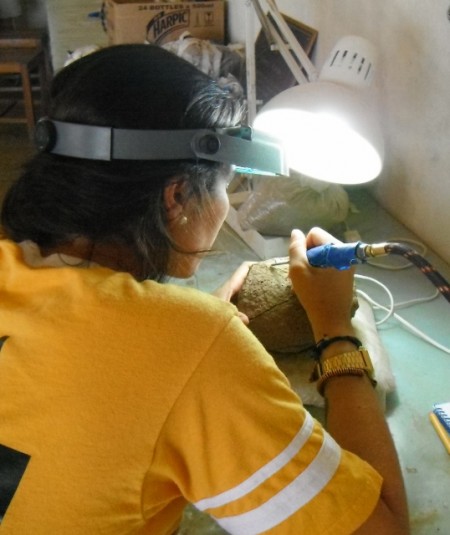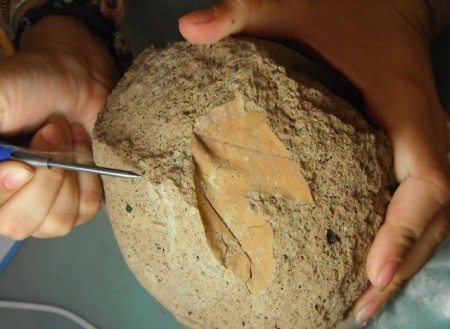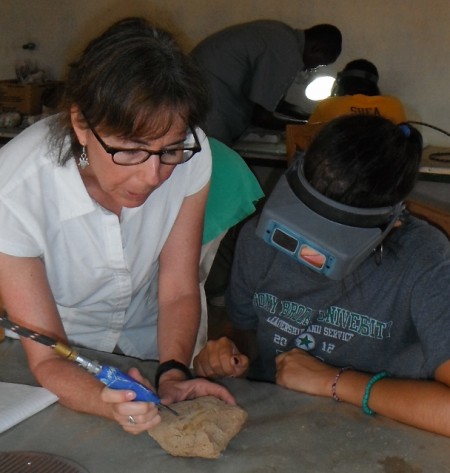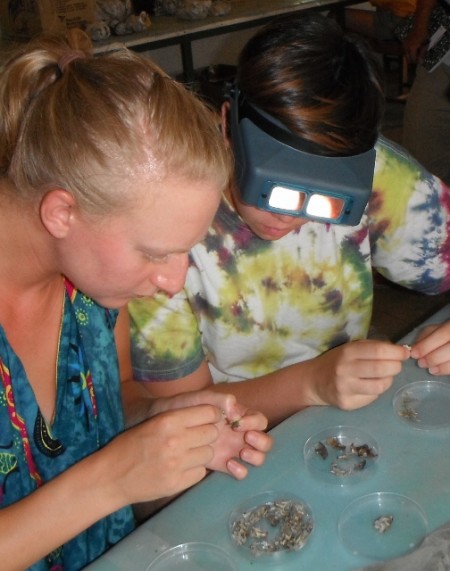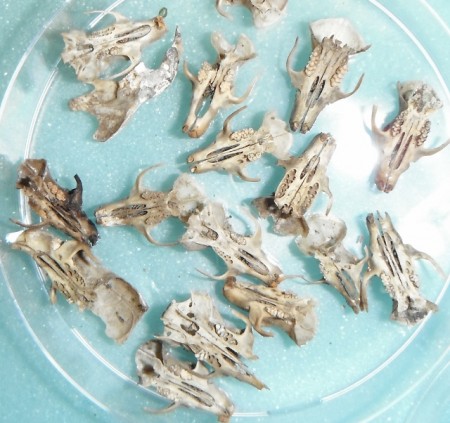Students went on a field trip to Kalodir, a site where with exposed sediments that are over 17 million years old. After chipping away sediments students recovered impressions of leaves and other plant parts. Impressions occur when, let’s say a leaf, drifts to the lake bottom where it is covered with fine sediments such as clay and silt. Over time the water disappeared and the sediments around the leaf hardened. Even though the organic matter that made up the leaf decomposes, the leaf left an in-print behind. This “impression” is what students found. Sometimes, and under certain conditions, plant parts do not decomposes but are preserved. This type of fossil is called a “compression”.
While some students prepared their plant fossils, others were engaged in other tasks. For example, piecing together tiny rodent skulls! One way to figure out what species of rats and mice live in an area is to rely on their predators – or better, what they leave behind. Owls, for example, regurgitate the fur and bones of their prey and spit it out in pellets. These “hairballs” are soaked in water and one can extract all the bones. Each rodent species is of a different size, shape, and may vary with regards to tooth shape, which allows the reconstruction of the prey.

